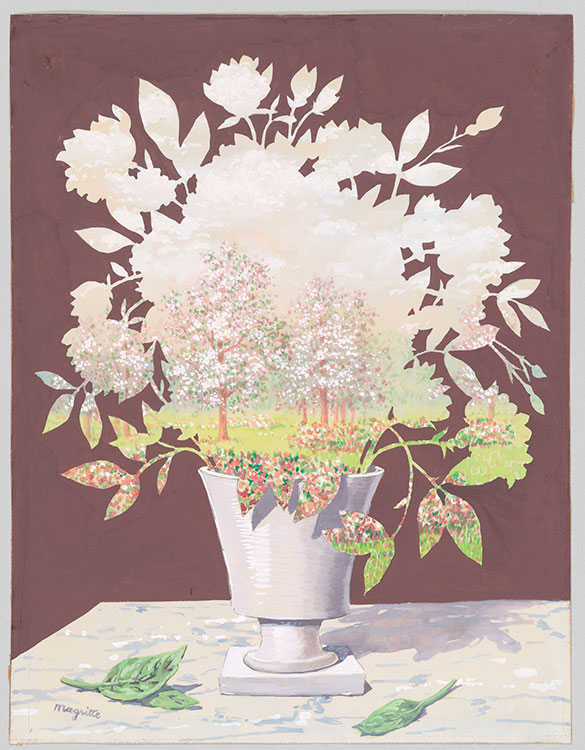
In the early 1940s, the war and the Occupation prompted Magritte, whose earlier works were often dark in mood, to turn to happier subject matter, in what he described as "a search for the bright side of life, the whole traditional range of charming things, women, flowers, birds, trees, the atmosphere of happiness." In this Plagiarism, he explored his favorite surrealist device of the double image as the flowers in a vase turn into a landscape, collapsing the distinction between near and far. This interplay speaks to the Surrealists' larger interest in the relationship between the eye and the imagination in looking at pictures. The subject also recalls Magritte's definition of a garden, arrived at during a Surrealist game in 1942: "a space set between a landscape and a bunch of flowers."
